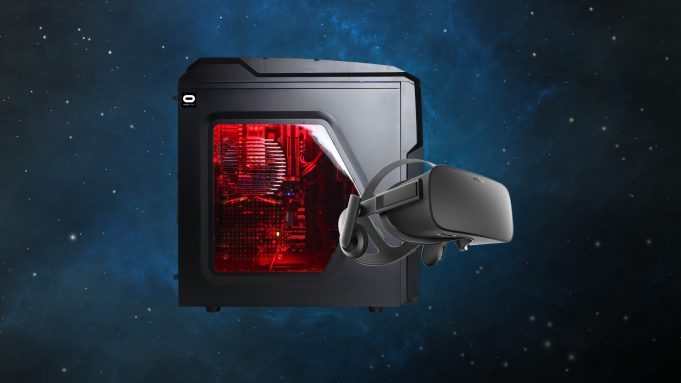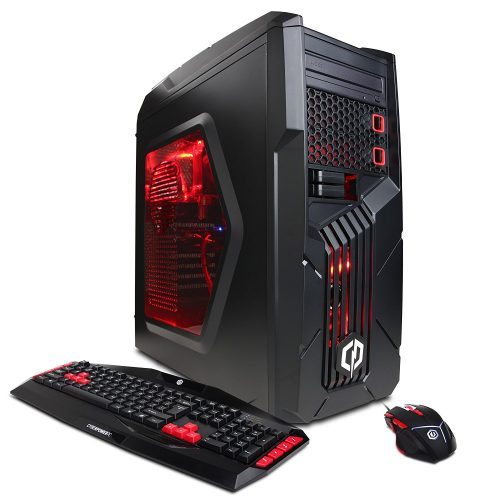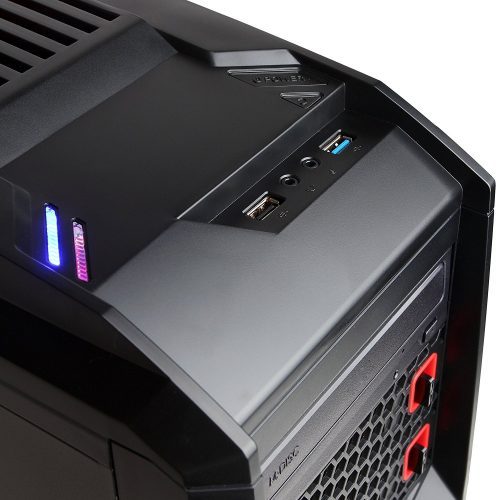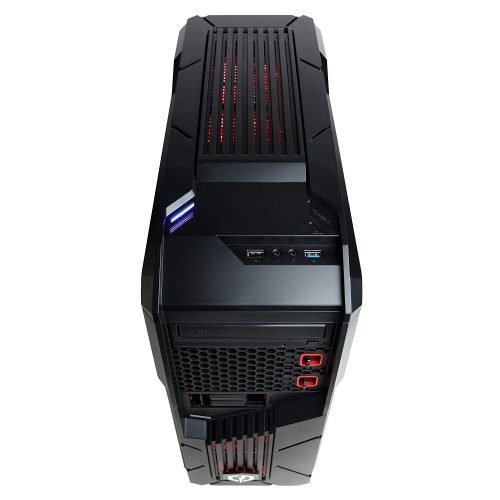Looking to lower the barrier of entry for VR, CyberPower Inc., a custom PC manufacturer, recently announced a new Oculus Ready gaming system that could just convince you to take the plunge into virtual reality. Dubbed the ‘Gamer Ultra VR Desktop’, the custom PC was created in partnership with AMD and Oculus, and being bundled with the Oculus Rift for a total of $1,099.98 from Amazon (link available soon) and BestBuy’s online shop.
Subtracting the price of the Rift headset ($599), that makes CyberPower’s new Oculus ready PC one of the most affordable options at $499.
CyberPower’s new system is certainly skating by on the bare minimum of what’s currently possible with its 4.2GHz AMD FX 4350 CPU and 4GB Radeon RX 470 graphics card, as even Oculus still recommends you have at least an NVIDIA GTX 1060/AMD Radeon RX 480 or greater for “the full Rift experience.” However, if you’re the type of person who doesn’t want to muck around with building your own PC and doesn’t have the scratch necessary for a future-proof beast of your dreams, the pre-built custom ‘Gamer Ultra VR Desktop’ could fit them bill if you’re currently looking for minimal upfront investment.
CyberPowerPC ‘Gamer Ultra VR Desktop’ specs
- AMD FX 4350 @ 4.2GHz CPU
- AMD Radeon RX 470 4GB GPU
- 8 GB DDR3 RAM
- 1 TB HDD 7200RPM
- 3x USB 3.0, 7x USB 2.0
- DVD+RW, DVD-RW
- Gaming Keyboard and Gaming Mouse included
Besides the fact that 2016 saw the first sub-$200 GPUs to land in the VR hardware bin, the lower price tag is primarily due to a new feature revealed by Oculus at Connect 3, the company’s annual dev conference, which Oculus says will not only help lower-end systems get into VR, but more importantly let them hit the 90 fps required for a smooth experience. Announced alongside the company’s new minimum spec, Oculus revealed Asynchronous Spacewarp (ASW), a feature designed to make positional tracking feel smoother by fixing judder caused when you computer’s GPU can’t keep up. It does this by cutting the VR app’s framerate in half to 45 fps and blending in a synthetically generated frame to return it to 90, essentially giving lower-end GPUs a little more leeway when it comes to rendering scenes in VR.
Oculus maintains that the system offered in the bundle has been “extensively tested by both CyberPowerPC and Oculus to ensure that it is perfectly compatible with the Oculus Rift headset and is officially certified Oculus Ready.” It’s important to note that ‘Oculus Ready’ doesn’t necessarily imply an all encompassing ‘VR Ready’ label, and that an Oculus Ready PC sporting these specs may not be powerful enough to work with other headsets.
“Less than a year after launching the Oculus Ready program, we’re thrilled to see that the all-in price for jumping into the highest-quality VR experience continues to drop by hundreds of dollars,” said Nate Mitchell, head of Rift, Oculus. “Thanks to the efforts of hardware companies like CyberPowerPC and AMD, more people will have the opportunity to enjoy the amazing games and experiences coming to Rift this year.”
Oculus offers PC bundles from a variety of manufacturers through its Oculus Ready program including Alienware, Dell, Asus, Lenovo, Aorus, Falcon Northwest, and HP (coming soon).










